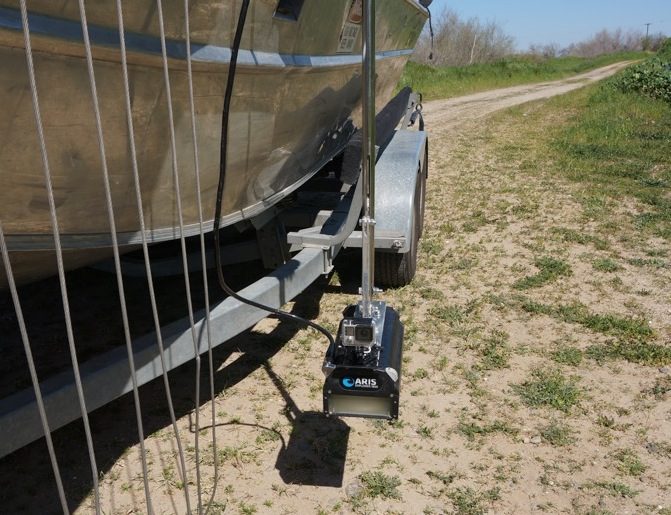Monday July 13, 2015
When it comes to fish sampling methods, electrofishing produces some of the most spine-tingling excitement. For the most part, this excitement arises from the suspense of not knowing which fish, if any, will rise to the surface after sending pulses of direct current (DC) through the water. While some people may cringe at the thought of “electrocuting” fish, this is actually a minimally invasive practice that, when performed correctly, causes galvanotaxis, the natural physiological response of a fish to an electric current. Galvanotaxis is a fish’s uncontrolled muscular convulsions that result in involuntary swimming towards the anode of the electrofisher – and the waiting nets of researchers. Recently, FISHBIO developed an improvement on this ubiquitous sampling method that, while taking some of the suspense out of electofishing, makes it much more efficient and effective. On a recent survey, we combined two advanced technologies to give ourselves unparalleled insights into the fish community of a large private pond.
The ARIS is a sophisticated sonar camera that can be used to generate video imagery of fish in conditions that are unfavorable for traditional cameras. Because the ARIS relies upon sound waves instead of light waves, it can record images of fish up to 35 m away in zero-light conditions. Built-in software also enables taking size and distance measurements of any object in the field of view. Since the camera operates at high frequencies (1.8 MHz), it is not affected by the lower frequency electricity generated by the boat electrofisher. By mounting the ARIS camera to our e-fishing boat (with our custom, FABLAB-built, fully automated boat mount), we were able to capture real-time imagery of the fish community while electrofishing. The results (shown in this video) were astounding.
Pairing these two technologies allows our scientists to sample fish more efficiently and safely. Observing real-time imagery from the ARIS camera enables our scientists to first locate fish in the water before applying current with the electrofisher. Additionally, we are able to characterize which habitats the fish are utilizing, which helps to better focus our sampling efforts and answer important behavioral questions. This technology duo may also provide answers about boat avoidance during e-fishing surveys. The ability to quantify how many fish are fleeing from the front of the boat may allow us to calculate more accurate estimates of fish abundance in a given location. Furthermore, ARIS video will allow us to avoid e-fishing in sensitive areas such as fish nesting sites (some of which can be seen in the video).
At FISHBIO, we constantly strive for innovative approaches to environmental monitoring and research. Often, these approaches involve pairing commonly used technologies (see: Seeing What Lies Below) to provide novel insights into difficult fisheries research questions. We look forward to developing this unconventional sampling technique as we continually explore the myriad applications of these technologies.
This post featured in our weekly e-newsletter, the Fish Report. You can subscribe to the Fish Report here.

